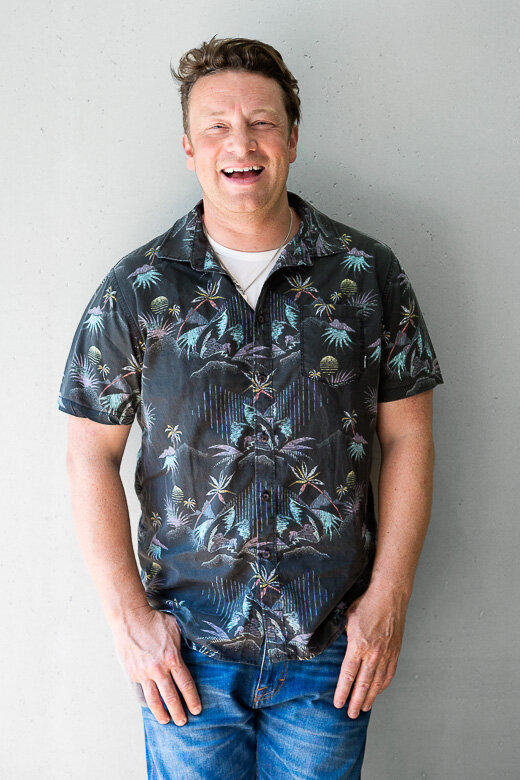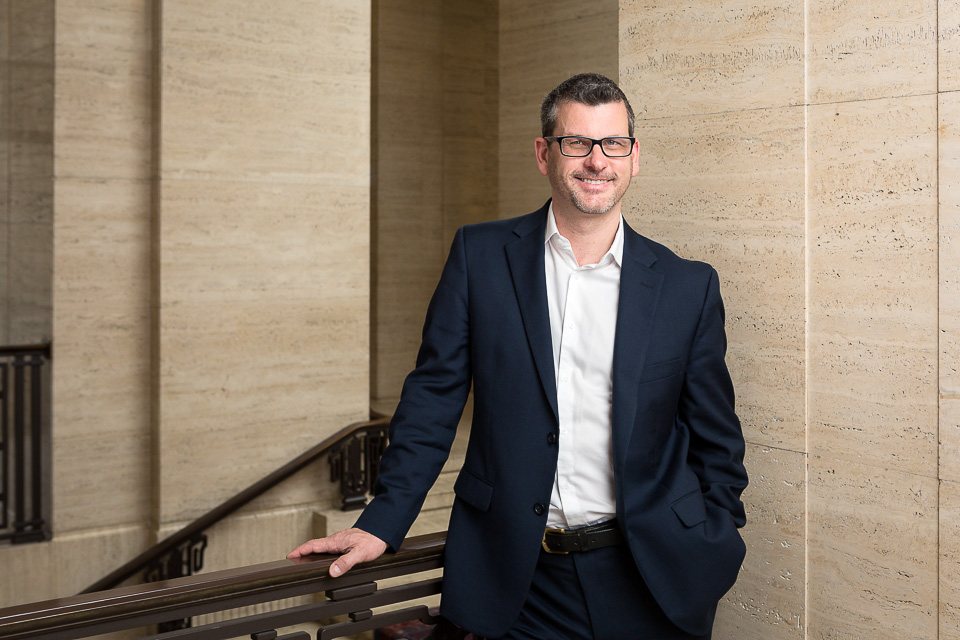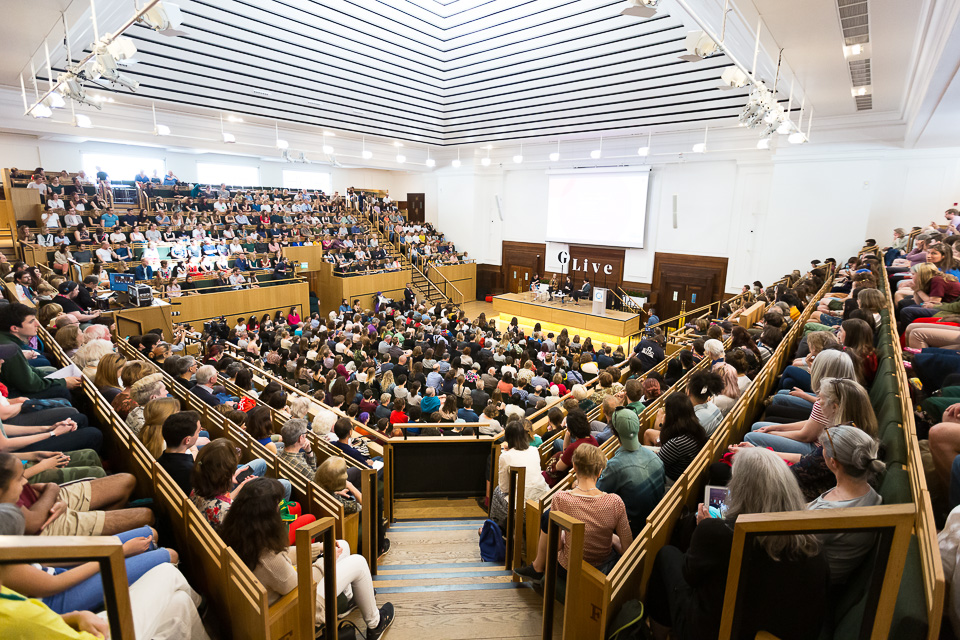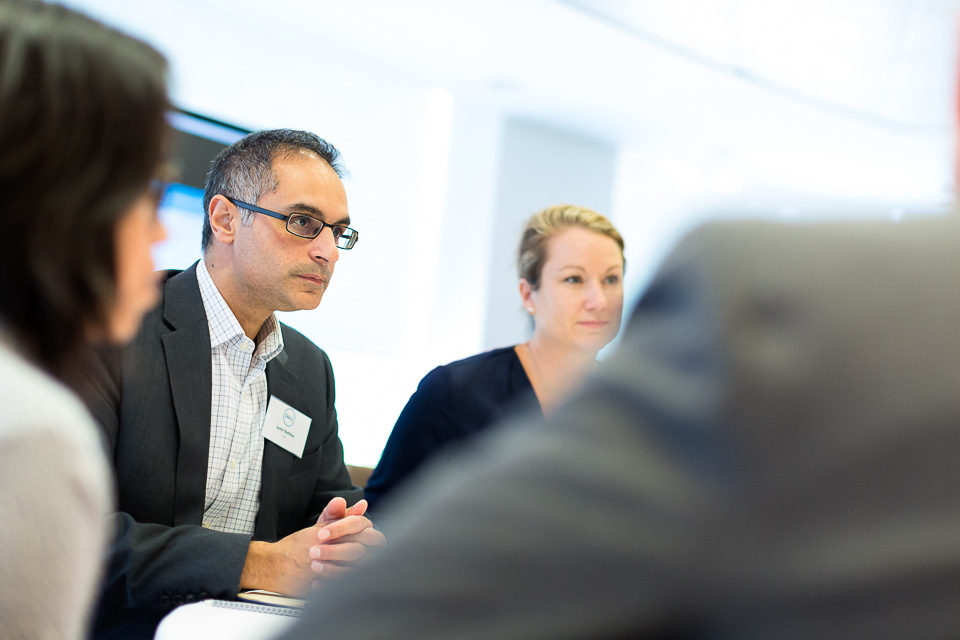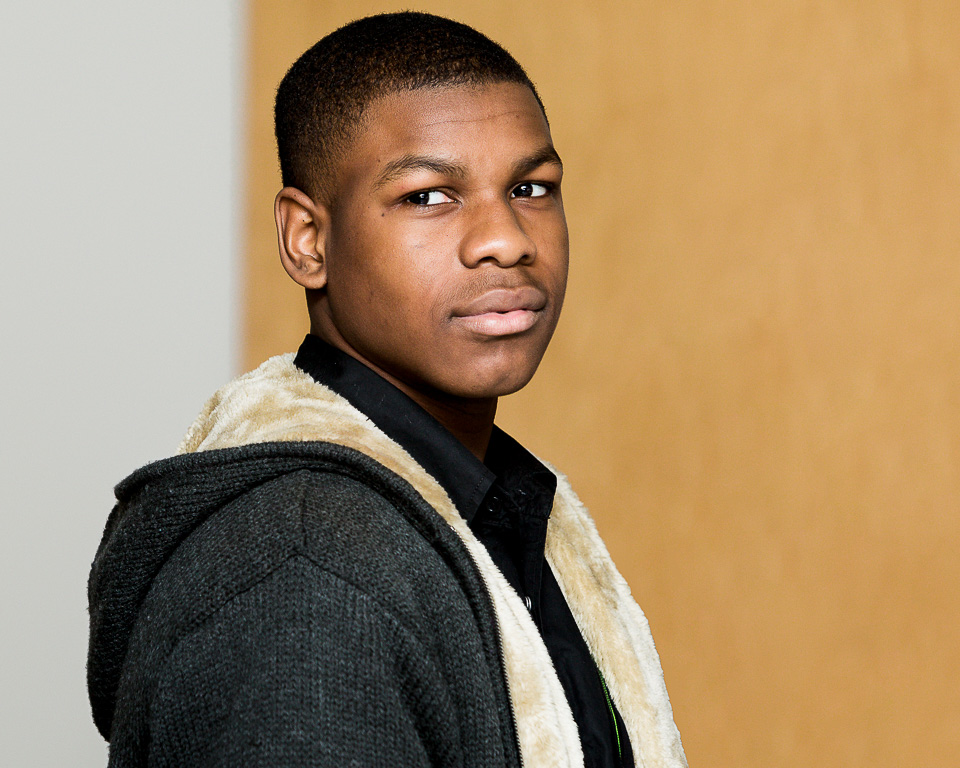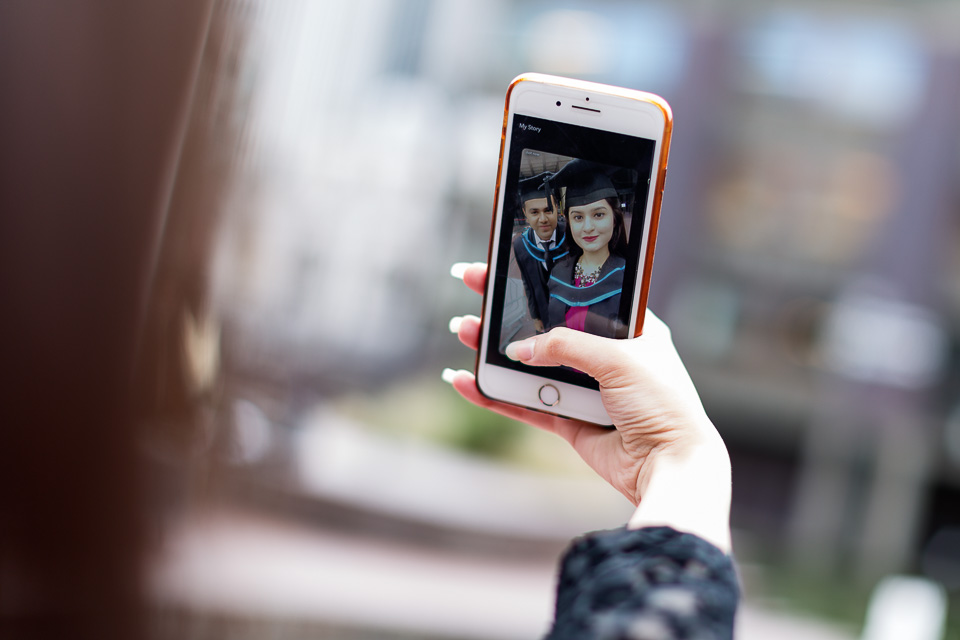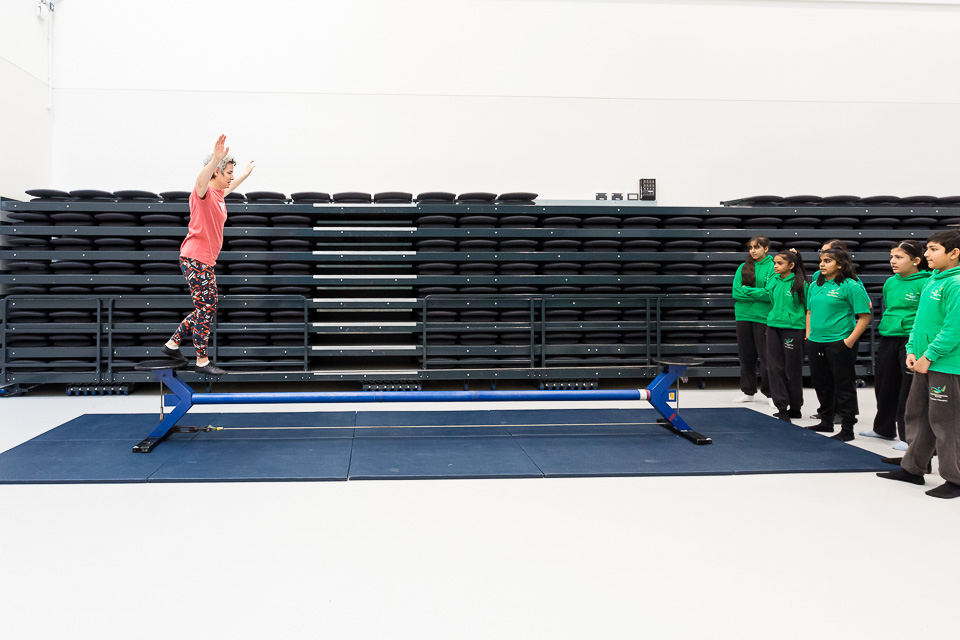Biteback 2030
I was commissioned to photograph the Youth Board for Biteback 2030 - an education drive for healthy eating against the food industry’s manipulative advertising techniques. I shot around a dozen portraits at the Jamie Oliver head office in North London, and here’s a selection:
Guinness World Records
The most fun shoot - bar none. Guinness World Records commissioned me to photograph Taekwondo black-belts Lisa and Chris Pitman. Among many other achievements, they’d broken records including the most pine boards broken in one minute with one hand (Lisa), the most roof tiles broken in one minute (Lisa), and the fastest time to break 1,000 roof tiles (Chris).
We weren’t photographing the record attempts, of course, but shooting what are known as ‘show pictures’ - lively, quirky, often silly illustrations. As they’re married, the logical angle was to have them smashing bricks in a chapel while in their wedding attire. Obviously.
Suresh Joachim holds more than 60 Guinness World Records (mainly endurance-based) to help underprivileged children across the world.
They include: the longest time balancing on one leg (76 hours and 40 minutes), the longest radio broadcast (120 hours), the longest dance marathon by an individual, the longest ten-pin bowling marathon, the record for basketball-dribbling distance in 24 hours, the longest drumming marathon (84 hours), and the longest continuous crawl of (56.62 km).
I photographed him to illustrate his record of watching films back-to-back (121 hours and 18 minutes). The rules are strict - let alone nodding off, you’re not even permitted to rest your head in your hand:
We knew roughly how to shoot it - from the viewpoint of a cinema screen. How best to bring the record to life? We tried a number of options, including him ‘reacting’ to horror films, comedies, and dramas. Popcorn seemed to work as a prop, and worked best when it was thrown around:
We also photographed him for his record of the longest time going up and down on an escalator (225.44 km). The shot itself took a number of attempts as we raced around, shooting during the quiet periods of commuters on the DLR. The record - I understand - took days:
Suresh also holds the record for the quickest time to reach 100 miles on a treadmill (13 hours, 42 minutes and 33 seconds):
And here he is with the ‘Peace Torch’. He ran the World Peace Marathon, running marathons in 72 countries across 6 continents:
Recent work - July 2019
Shane Richie, who is appearing as Archie Rice in John Osborne’s play, The Entertainer.
Cover shoot for the Donmar Warehouse magazine
(Above and below) Professor Wendy Thomson CBE, University of London's Vice-Chancellor, pictured at Senate House, along with staff members.
Anna Taylor, Greta Thunberg & Caroline Lucas at a Guardian Live panel in London.
Corporate portrait for Proofpoint
Jamil Nathoo, Dell’s Vice President and General Manager, Consumer & Small Business
Marta Krupinska, head of Google for Startups UK at the Shoreditch campus.
David Kamenetzky, Director at Kuehne + Nagel International AG
(Above and below) Arlo Brady, CEO of Freuds.
From the archives - six
I’m finally getting round to watching the Star Wars series and recognised actor John Boyega (he plays a stormtrooper who joins the good guys). I felt sure I’d met him somewhere, but I wasn’t too certain. I couldn’t think where it could have been, or when.
And I don’t really trust my memory. I have mild prosopagnosia - meaning I struggle to remember faces (one of the worst things for a photographer to have). However, I always remember faces I’ve edited. That is, if I’ve photographed someone, I'll remember. My prosopagnosia has led to some interesting situations which I’m sure I’ll blog about.
Anyway, with John, if we had met, it would have had to have been at a rehearsal or photocall. Browsing the archives, there he was. At the Tricyle theatre (now The Kiln Theatre), I photographed a series of work entitled Not Black & White - three plays tackling prejudice. Several years ago. I got two frames of John.
But what I remember most wasn’t John, or the rehearsals, but a conversation about music with the guy on the right (above), and him telling me about ‘Radiodread’ - a reggae/ska cover of OK Computer.
Funny thing, memory.
Recent work - April 2019
(Above and below) A series of images of street cleaners, enforcement officers, and waste collection teams for Wandsworth Council.
For Standard Chartered Bank’s annual report.
Corporate portrait for Pearson.
(Above and below) portraits for Corporate Financier magazine.
Corporate portraits where people are blinking are, on their own, entirely useless, but make an intriguing set that one day I might put on the blog. The same goes for lighting test shots (as in the example above) which - by definition - aren’t even posed. This photo would normally have been deleted straight after import but caught my eye.
(Above and below) Interior designer Sam Watkins-McRae.
(Above and below) Workshops for Mousetrap Theatre Projects.
(Above and below) For the University of London, some portraits of graduates - and some quick candids in between - at the Barbican.
International Women's Day
Landsec commissioned me to take portraits of ten staff members at their offices in Victoria. We had a room reserved, and were free to use any available locations in the vicinity (ie reception, foyer & cafe) as well as Cardinal Place, their adjacent retail centre and outdoor public space.
Poor weather meant we couldn’t shoot outside, so the issue was about getting a good variety with limited indoor options. This became increasingly difficult as the day went on. Happily, all the ladies were very generous with their time (and their patience). Here’s a selection from the shoot:
Recent work - February 2019
Here’s a selection of recent work , mostly with a commercial / event angle:
We took Joey up on the roof at dusk to announce the return of War Horse return to the National Theatre.
Also for the NT, The Curious Incident of the Dog in the Night-Time was moving to the Piccadilly Theatre. We took the scene where Christopher is lost and bewildered on arriving in London, and shot it at Piccadilly Circus lights. It was probably the least unusual thing going on there, despite Toby being a real rat on this occasion (we’d used a puppet previously).
Egypt’s tourism minister Rania Al-Mashat prepares for a live interview at Bloomberg.
One of a set of portraits for Freesat at their offices.
(above and below) I was sent to photograph BTS of the judges and finalists of for Toyota Mobility Foundation’s $4 million ‘Mobility Unlimited Challenge’ at the offices of (partner) Nesta, the Innovation Foundation. Innovators from around the world presented their technologies aimed to improve the lives of people with lower limb paralysis.
(above and below) Global industry leaders came together for the live launch of the Alliance to End Plastic Waste (AEPW) at the Leadenhall building.
(above and below) A circus skills workshop for students ahead of Cirque du Soleil’s Totem
Also for Mousetrap Theatre Projects, I photographed a Relaxed Performance of Motown - The Musical. These performances are designed for families with children with special needs.
I ran a (very) informal photography session, and took photos of visitors, at Facebook London’s annual ‘Take Your Parents to Work’ day. This is me - and I don’t like having my picture taken.
(above and below) Product shots for Fruitflow.
MP Ed Miliband speaks about Net Zero Britain at Portcullis House (a discussion on climate policy, not Brexit).
Four photographs
While visiting my parents recently, I saw these little framed photos on the mantelpiece in the guest bedroom. The house has always been a kind of museum as my mum sells antiques: for all I knew, these may have been gathering dust there for years, hiding in plain sight among the bric-a-brac.
But that’s not why I hadn’t noticed them before. It’s a magical house: objects inside are - if not invisible - unseen. Since they exist solely not to be broken, they only appear to visitors when in danger - and even then briefly - with the aim of revealing their weight, material and potential repair cost. It takes a second or third look to actually notice anything, to see something as an object of interest.
Anyway, I was intrigued. There’s something of the gothic about them. And, as personal pictures, they seem familiar as they look out from their tiny, ornate frames. But no, they don’t look like any of the rest of my family at all. Their faces don’t elicit any emotion. None of that sudden sorrow pricked by the image of a great-aunt I might half-remember. These were definitely strangers.
I was also curious as a couple of the sitters are looking off camera. I felt this seemed odd in more traditional times, where a photo-session would take some time and be expensive, I imagine. In other words, you have one shot, but you choose to look away for it. Either they’re dead (Victorian post-mortem photography may or may not have been a thing) or these weren’t family portraits at all, but official royal / celebrity photographs.
Also, there are just four - this is an aside, as I’m aware people didn’t own cameras a hundred years ago - but it made me think: my own childhood fills a couple of albums of images. A hundred photos. Fewer? Not enough to tell a story, but there’s a flavour, perhaps. And throughout the house, on tables, walls, mantelpieces and shelves there are a few dozen framed.
I already have several thousand photos of my family and friends, very few of which I’ll care for enough to print and get anything more considered than an Oliver Bonas frame. I don’t whittle them down: I barely look at them. Everything is downloaded, then uploaded for some future date. Unlike the attic where albums end up (awaiting being thrown away by children on the parents’ death, after just one, cursory, curious browse), there’s infinite space in the cloud.
Memory really is cheap, it seems.
In this stream of recorded consciousness, there’s no hierarchy, no defining moments, no defining times. No editing. Just a near-continuous record of everything both important and irrelevant. Everything captured, just in case, because of the fear of forgetting (as if forgetting’s so awful). Surely we remember what’s important?
Anyway, back to the thread. This lovely collection of four photos.
Who were these people? Were they related? When were the photos taken? They must have been important to someone. The main difference with our current culture of recording is that these are not ‘moments’ - well, one moment in a person’s life, perhaps - but instead, portraits. They may each be the only picture of the person in existence, and as such have a lot of work to do.
Immediately I put them into my bag (without telling mum - it’s easier to seek forgiveness than permission), planning to return them after taking pictures. I later emailed to ask her about them.
She replied:
“Oh, those!
They belonged to a Mrs Annie Haines - she became a family friend when she baby sat [my uncle] when he was a toddler. She died twenty odd years ago so unless I can find a medium and a ouija board - I can’t ask about her connection - if any - to the subjects.
I helped clear her few belongings when she went into a home a couple of years before she died and kept the photos because I liked them. They are typical of late Victorian/early Edwardian family photographs - especially (as in photo two) where the husband is seated while the wife stands!
I may be wrong but I think that the handsome young man in the fourth photo could be a ‘celebrity’ of the day rather than a family member. His face is familiar. Sorry, can’t be of any more help. Might be worth taking the photos out of the frames to see if anything is written on the backs…”
So that’s what I did:
Not much. The only one with anything useful to go on is the first picture. A quick search yielded a list of photography studios in the West Midlands in the later half of the 19th century, in this case it looks like Sunderland and Hudson. And the picture is labelled “Great-Grandma Gammage”.
Oddly, I remember Mrs Haines - we used to visit her when I was little.
The rest of her email talked about photos she has at home, on which she does have information. Photos of Georgie, whose death (aged three) was predicted by a gypsy. John, a murderer. An uncle, one of thousands who died building the Burma Railway for the Japanese. I’ve managed to get hold of these and will scan and write about them once I’ve get everything together.
As for these, I don’t really care that I don’t know who they are. They’re nothing to do with me, and there’s no mystery or rabbit-hole of research I’m going down. But in time I’ll inherit them and - just to mess with visitors - put them up somewhere prominent.
-
June 2025
- Jun 19, 2025 The forever purge
- Jun 19, 2025 University prospectus
- Jun 11, 2025 Recent work - June 2025
- Jun 6, 2025 On Looking
-
January 2025
- Jan 21, 2025 The photographer's dictionary
-
November 2024
- Nov 19, 2024 Recent work - November 2024
-
September 2024
- Sep 17, 2024 Recent work - September 2024
-
July 2024
- Jul 4, 2024 Mean Girls
-
May 2024
- May 28, 2024 Wakehurst
- May 20, 2024 Graduation
-
April 2024
- Apr 16, 2024 Recent work - April 2024
-
January 2024
- Jan 22, 2024 Recent work - January 2024
- Jan 9, 2024 Long live the local
-
October 2023
- Oct 13, 2023 CBRE
- Oct 4, 2023 Recent work - October 2023
-
September 2023
- Sep 22, 2023 Seeing past the subject (2)
-
April 2023
- Apr 17, 2023 Tinder
- Apr 12, 2023 Recent work - April 2023
-
February 2023
- Feb 7, 2023 Will AI do me out of a job?
-
December 2022
- Dec 12, 2022 Freelance life and other animals
-
November 2022
- Nov 4, 2022 Recent work - November 2022
-
July 2022
- Jul 26, 2022 Recent work - July 2022
- Jul 25, 2022 SOAS
-
May 2022
- May 30, 2022 Ebay
- May 18, 2022 Physiotherapy
- May 4, 2022 Vertex
- May 4, 2022 Roche
-
January 2022
- Jan 6, 2022 Recent work - December 2021
- Jan 5, 2022 Prevayl
-
December 2021
- Dec 17, 2021 The day the hairdressers opened
-
December 2020
- Dec 15, 2020 SOAS - postgraduate prospectus
- Dec 7, 2020 Online teaching
-
October 2020
- Oct 11, 2020 Gratitudes
- Oct 5, 2020 GoFundMe Heroes
-
September 2020
- Sep 24, 2020 Headshots: why we need them, and why we don't like them
- Sep 15, 2020 From the archives - seven
- Sep 10, 2020 Recent work - September 2020
-
February 2020
- Feb 13, 2020 Mootral
-
November 2019
- Nov 7, 2019 Biteback 2030
-
October 2019
- Oct 2, 2019 Guinness World Records
-
September 2019
- Sep 16, 2019 B3 Living
-
July 2019
- Jul 22, 2019 Recent work - July 2019
- Jul 19, 2019 From the archives - six
-
April 2019
- Apr 15, 2019 Recent work - April 2019
-
March 2019
- Mar 12, 2019 International Women's Day
-
February 2019
- Feb 4, 2019 Recent work - February 2019
-
January 2019
- Jan 17, 2019 Four photographs
-
December 2018
- Dec 19, 2018 Handy gadgets and where to find them
- Dec 10, 2018 From the archives - five
-
November 2018
- Nov 26, 2018 How to compose photographs
- Nov 5, 2018 Recent work - November 2018
-
October 2018
- Oct 17, 2018 How to edit photographs in Instagram
- Oct 8, 2018 Out with the old
- Oct 4, 2018 Recent work - October 2018
- Oct 1, 2018 A little learning is a dangerous thing
-
September 2018
- Sep 12, 2018 From the archives - four
-
August 2018
- Aug 16, 2018 Recent work - August 2018
- Aug 15, 2018 I don't follow you
- Aug 6, 2018 Cookpad
-
June 2018
- Jun 7, 2018 Monks & Marbles
-
May 2018
- May 23, 2018 Netflix & Woof
- May 21, 2018 Best of Instagram
-
April 2018
- Apr 24, 2018 Standard Chartered Bank
-
March 2018
- Mar 16, 2018 Corporate self-portraiture (two)
- Mar 8, 2018 International Women's Day
-
February 2018
- Feb 9, 2018 Winter swimming
-
January 2018
- Jan 23, 2018 From the archives - three
- Jan 16, 2018 2017 in pictures
-
December 2017
- Dec 6, 2017 Toyota Mobility Foundation
-
November 2017
- Nov 24, 2017 Corporate work
-
October 2017
- Oct 31, 2017 Recent work - October 2017
- Oct 13, 2017 Pfizer - Protecting our Heroes
-
September 2017
- Sep 21, 2017 Campaign portraits
-
August 2017
- Aug 22, 2017 Wyborowa vodka
- Aug 1, 2017 Vauxhall animation
-
July 2017
- Jul 31, 2017 Tanguera
- Jul 20, 2017 Take your parents to work
-
June 2017
- Jun 22, 2017 Recent work - June 2017
-
May 2017
- May 22, 2017 Mannequins (female)
- May 16, 2017 Scott Reid
- May 9, 2017 Huawei - The New Aesthetic
-
April 2017
- Apr 24, 2017 S.H.O.K.K.
- Apr 21, 2017 Battle
- Apr 18, 2017 Ashburton
- Apr 11, 2017 Victoria Jeffrey
-
March 2017
- Mar 30, 2017 Parkour Generations
- Mar 27, 2017 War Horse in Brighton
- Mar 23, 2017 Rock'n'roll
- Mar 20, 2017 Jane Eyre
- Mar 15, 2017 Patricia Cumper
- Mar 8, 2017 1000 Pieces Puzzle
-
January 2017
- Jan 23, 2017 Framing 101
- Jan 10, 2017 View from the gods
-
December 2016
- Dec 14, 2016 Studio Fractal
-
November 2016
- Nov 29, 2016 Musician
- Nov 21, 2016 Gavin Turk
- Nov 10, 2016 While I was waiting...
- Nov 3, 2016 Canvas
-
October 2016
- Oct 28, 2016 Rishi Khosla
- Oct 18, 2016 Sadlers Wells workshop
- Oct 11, 2016 Rose Bruford
- Oct 6, 2016 Making lemonade at Harrods
-
September 2016
- Sep 28, 2016 Money Mentors
- Sep 21, 2016 Instawalks
- Sep 12, 2016 Mannequins (m)
-
August 2016
- Aug 23, 2016 Tomorrow's People
- Aug 17, 2016 Mousetrap
-
July 2016
- Jul 28, 2016 Property brochure
- Jul 19, 2016 Choosing between photos
- Jul 8, 2016 Create Victoria
- Jul 1, 2016 Recent work - July 2016
-
June 2016
- Jun 21, 2016 Cohn & Wolfe 2
- Jun 10, 2016 Physical Justice
-
May 2016
- May 31, 2016 Corporate self-portraiture
- May 23, 2016 Photivation (two) & Instagram
- May 16, 2016 From the archives - two
- May 4, 2016 Red Channel
-
April 2016
- Apr 28, 2016 GBG corporate shoot
- Apr 21, 2016 28 days later
- Apr 14, 2016 Colgate
- Apr 6, 2016 Breaks and burns
-
March 2016
- Mar 31, 2016 Mixed bag
- Mar 22, 2016 Pearson
- Mar 15, 2016 War Horse - The Final Farewell
- Mar 8, 2016 The Jersey Boys
- Mar 1, 2016 Sky Garden
-
February 2016
- Feb 23, 2016 Avada Kedavra!
- Feb 17, 2016 Bees
- Feb 8, 2016 From the archives
-
January 2016
- Jan 27, 2016 Kaspersky - Alex Moiseev
- Jan 19, 2016 Melanie Stephenson
- Jan 11, 2016 Photivation
-
December 2015
- Dec 28, 2015 Noma Dumezweni
- Dec 17, 2015 Creating a portfolio
- Dec 8, 2015 Victoria
- Dec 1, 2015 Collabo
-
November 2015
- Nov 25, 2015 Danny Sapani
- Nov 17, 2015 People, Places and Things
- Nov 10, 2015 Romain Grosjean
- Nov 2, 2015 Egosurfing
-
October 2015
- Oct 23, 2015 The Curious Incident of the Dog in the Night-Time
- Oct 13, 2015 This Girl Can
- Oct 1, 2015 Ratings are overrated
-
September 2015
- Sep 23, 2015 Indra
- Sep 15, 2015 Seeing past the subject
- Sep 8, 2015 Black and white (two)
- Sep 2, 2015 The decisive moment (two)
-
August 2015
- Aug 25, 2015 British Gas
- Aug 19, 2015 Problem solving vs creativity
- Aug 12, 2015 Cohn & Wolfe
- Aug 5, 2015 James
-
July 2015
- Jul 31, 2015 Photographing the photographer
- Jul 28, 2015 Black and white
- Jul 20, 2015 Comedian
-
December 2014
- Dec 15, 2014 2014 in pictures
-
January 2014
- Jan 9, 2014 2013 in pictures
-
February 2013
- Feb 10, 2013 It's not the camera
-
December 2012
- Dec 31, 2012 2012 in pictures
-
April 2012
- Apr 30, 2012 What the job is - or, "Dealing with lemons"
- Apr 13, 2012 Your holiday photos aren't rubbish
-
May 2011
- May 13, 2011 Showing the world differently
- November 2010
-
October 2010
- Oct 9, 2010 Seeing pictures




